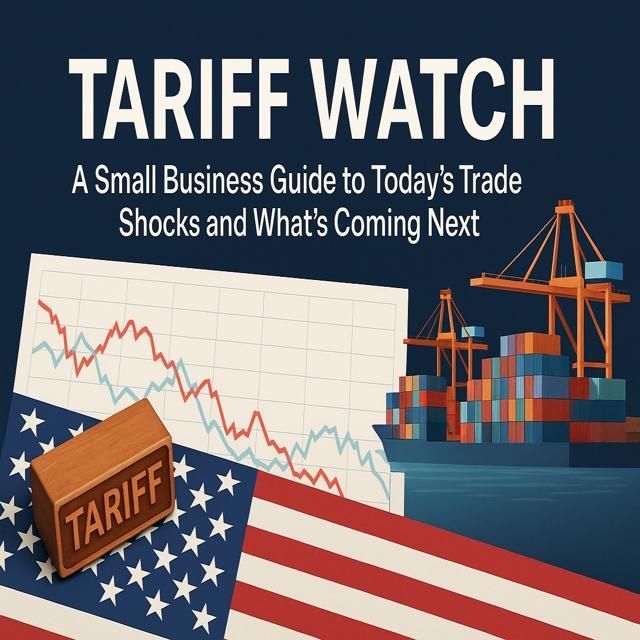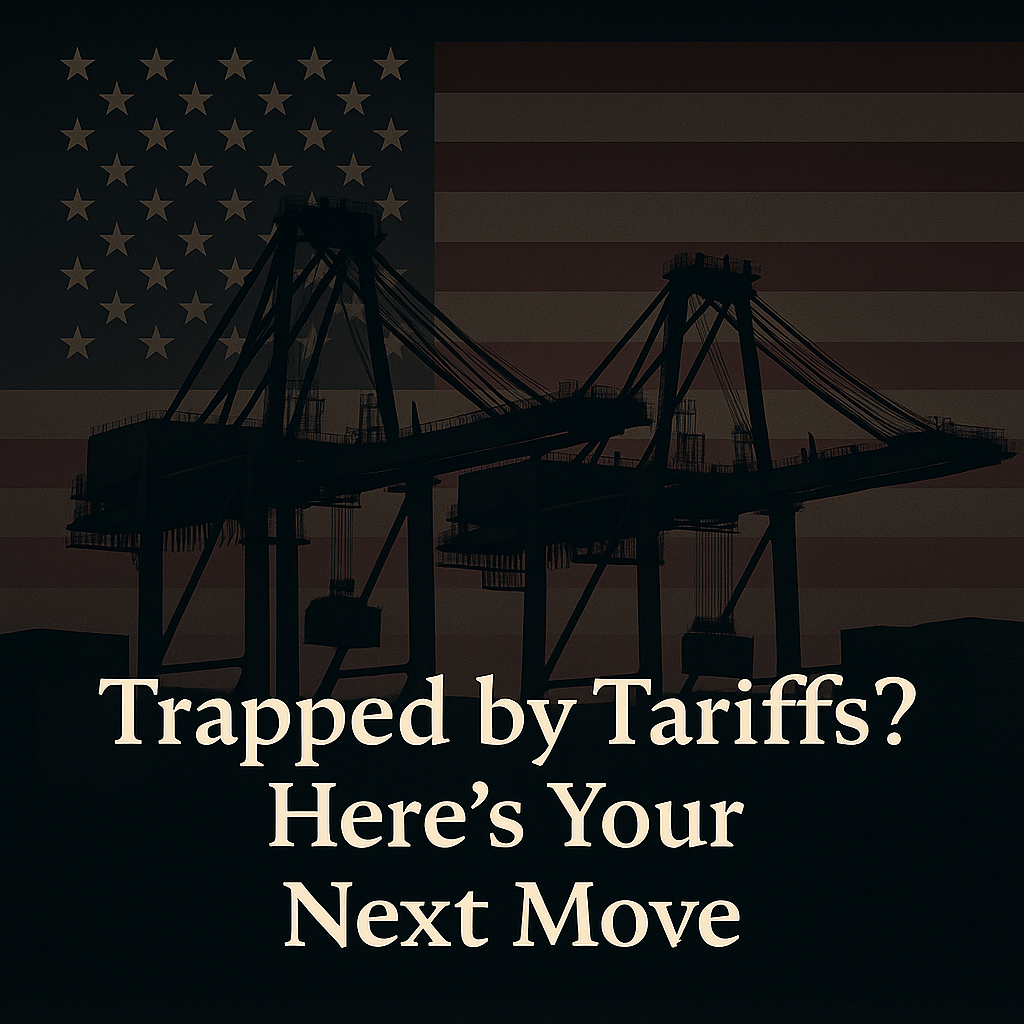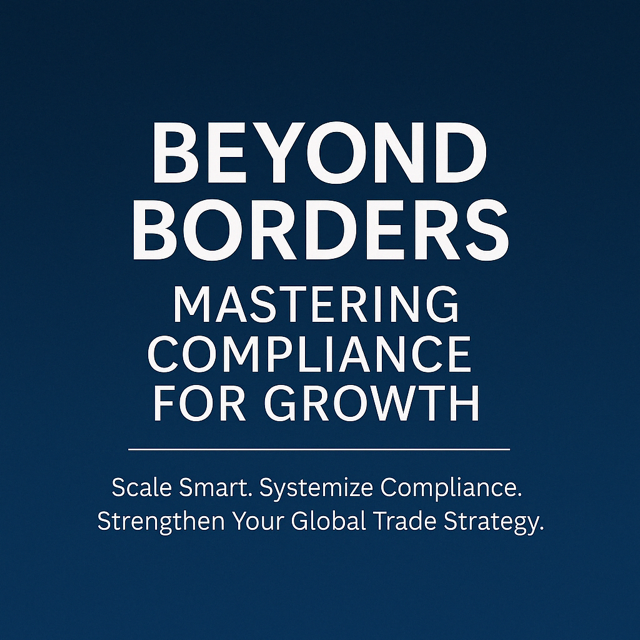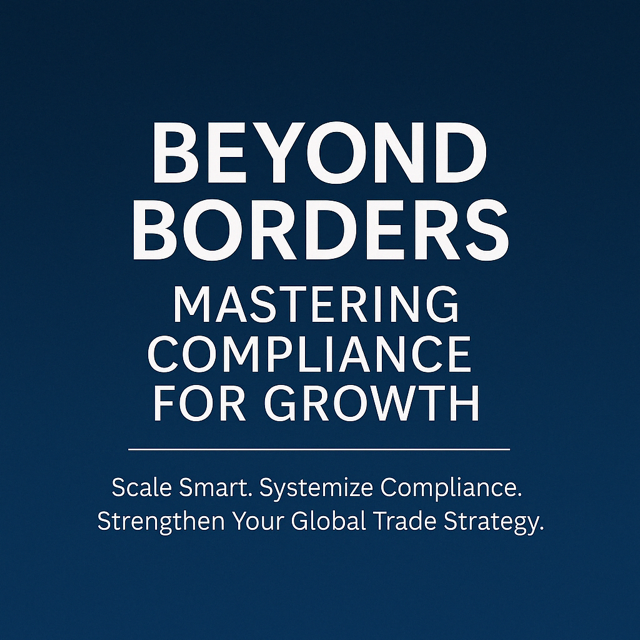When importing goods into the U.S., small and midsized businesses (SMBs) must prioritize compliance with customs regulations to avoid costly delays, fines, or even seizure of goods. Import compliance ensures that your products meet U.S. Customs and Border Protection (CBP) requirements and adhere to applicable regulations, allowing for efficient and timely clearance of goods.
In this article, the eighth in our Unlocking Global Markets series, we’ll discuss essential steps SMBs should take to ensure smooth customs clearance for imported goods. By following these steps, you can avoid common pitfalls and ensure your import process is as seamless as possible.
The Importance of Import Compliance
Import compliance refers to the process of ensuring that imported goods meet all necessary regulations, including proper classification, documentation, and payment of duties. Failing to comply with these requirements can have severe consequences, including:
- Delays: Incorrect paperwork can cause goods to be held at customs, leading to extended delivery times and potentially lost revenue.
- Penalties: Inaccurate product classification or underpayment of duties can result in significant fines.
- Seizure of Goods: Non-compliant goods may be seized by CBP, leading to financial and reputational damage.
Understanding and adhering to the necessary steps for compliance is critical for keeping your business running smoothly and protecting your bottom line.
Key Steps for Ensuring Smooth Customs Clearance
1. Proper Product Classification with HS Codes
Correct product classification is the foundation of import compliance. As covered in our article, “Harmonized System (HS) Codes: Cracking the Code!” , every product entering the U.S. must be assigned an HS code. This international classification system helps determine the applicable duties, taxes, and trade restrictions.
Why HS Codes Are Critical:
- Correct Tariff Calculations: Accurate classification helps you pay the appropriate tariffs, avoiding both underpayment and overpayment.
- Customs Clearance: Misclassification can lead to delays, as customs officials may need to re-evaluate your product’s classification.
- Eligibility for Trade Agreement Benefits: Accurate HS codes ensure eligibility for tariff reductions under Free Trade Agreements (FTAs), such as the U.S.-Mexico-Canada Agreement (USMCA).
2.
Accurate Documentation
Proper documentation is essential for customs clearance. Incomplete or inaccurate paperwork is one of the primary causes of delays at customs.
Key documents include:
- Commercial Invoice: This document provides the details of the transaction between you and the supplier, including product descriptions, prices, and terms of sale.
- Bill of Lading: A shipping document issued by the carrier that outlines the transportation of the goods.
- Packing List: A document that details the contents of each package within the shipment.
- Certificate of Origin: This certifies the origin of the goods and can be important for determining eligibility for duty reductions under FTAs.
Accurate and thorough documentation will help expedite the customs clearance process and ensure your goods move smoothly through inspection.
3. Determine Import Permits or Licenses
Certain products require additional permits or licenses from federal agencies, depending on the type of goods being imported. For example:
- Agricultural products may need approval from the U.S. Department of Agriculture (USDA).
- Pharmaceuticals and medical devices require compliance with Food and Drug Administration (FDA) regulations.
- Hazardous materials must comply with regulations set by the Environmental Protection Agency (EPA) or Department of Transportation (DOT).
Failure to secure the necessary permits can result in goods being delayed or rejected at customs.
4. Know Your Tariff and Duty Obligations
Tariffs and duties are central to the import process, as they directly impact the cost of goods. These fees depend on several factors, including product classification, country of origin, and applicable trade agreements.
To avoid underpayment or overpayment, it’s essential to understand the tariff rates for your imported products. Leveraging Free Trade Agreements (FTAs) can also reduce or eliminate certain tariffs. For instance, goods imported from Canada or Mexico under USMCA may be eligible for reduced duty rates, as discussed in our article on “Trade Agreements” .
5. Set Up a Robust Record-Keeping System
Maintaining a well-organized record-keeping system is critical for both compliance and efficiency. CBP requires that importers retain documentation related to imported goods for a minimum of five years. These records can be used in the event of a customs audit or inquiry and should include:
- Commercial invoices
- Bills of lading
- Tariff classification documents
- Certificates of origin
Having these records readily accessible helps ensure the quick resolution of any customs questions and prepares you for potential CBP audits.
6. Consider Partnering with a Customs Broker
Navigating U.S. customs regulations can be complex, especially for SMBs without dedicated compliance teams. A licensed customs broker can streamline the entire process, from proper product classification to handling documentation and communication with CBP.
Summary of Key Steps for Import Compliance
To ensure smooth customs clearance for your imported goods, keep these key steps in mind:
- Classify Products Correctly: Use accurate HS codes to determine tariffs and avoid delays.
- Prepare Accurate Documentation: Complete and accurate paperwork is essential for smooth customs clearance.
- Check for Required Permits: Determine if your goods need any special licenses or permits to enter the U.S.
- Calculate Duties and Tariffs: Know your obligations and leverage any available trade agreements to reduce costs.
- Maintain Detailed Records: Proper record-keeping is required by law and helps resolve compliance issues quickly.
Each of these steps is critical to staying compliant and avoiding costly delays or penalties.
The Role of a Customs Broker in Import Compliance
For businesses new to importing, working with a customs broker can be incredibly beneficial. Customs brokers are licensed professionals with expertise in import regulations and customs procedures. They can help ensure that your goods are correctly classified, documentation is complete, and that customs clearance proceeds without delay.
Key Benefits of Using a Customs Broker:
- Expert Knowledge: Customs brokers understand the complexities of U.S. import regulations and can help you navigate them efficiently.
- Error-Free Documentation: Brokers handle the preparation and submission of required documents, reducing the risk of errors and delays.
- Faster Clearance: With their experience and established relationships with CBP, customs brokers can expedite the clearance process, helping you avoid unnecessary delays and disruptions to your supply chain.
By partnering with a customs broker, you can focus on growing your business, knowing that your imports are being handled by professionals.
If you're curious to see how we can help, please visit our website http://magneticprecision.com/ For inquiries and questions, contact us at inquiries@magneticprecision.com.
Looking Ahead: Next Article
In the next article of our series, we’ll explore the importance of “Country of Origin Marking: Why is it important to label products correctly?” Proper labeling is critical to ensuring your products meet U.S. regulations and avoid penalties. Stay tuned for insights into how accurate country-of-origin marking can protect your business and build consumer trust.
References and Further Reading (Blog Post):
- Customs Basics : What are customs duties, and tariffs, and how do they impact your business?
- Incoterms : What do terms like FOB, CIF, and EXW mean, and how do they affect shipping responsibilities?
- Harmonized System (HS) Codes : Cracking the Code!
- Trade Agreements : What are free trade agreements, and how can they benefit your exports?
- Export Documentation : What paperwork is required for shipping goods abroad?
By following these steps and understanding the importance of compliance, you’ll be well on your way to mastering the complexities of U.S. customs clearance.






